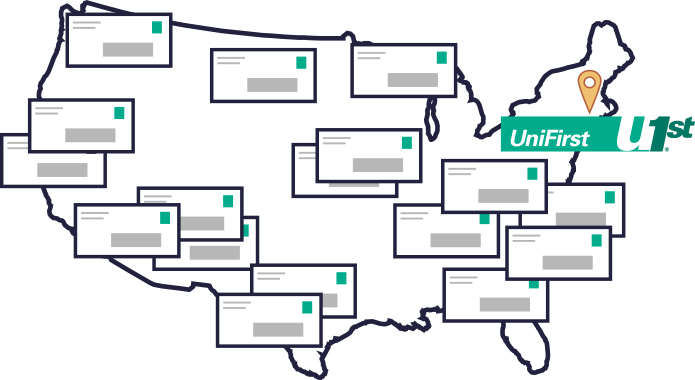 UniFirst Corporation has a unique energy profile based on its laundering operations. But with facilities widely scattered all over the U.S. and other countries, UniFirst had difficulties with utility bill management and data collection—until they started using EnergyCAP.
UniFirst Corporation has a unique energy profile based on its laundering operations. But with facilities widely scattered all over the U.S. and other countries, UniFirst had difficulties with utility bill management and data collection—until they started using EnergyCAP.
Today’s blog introduces a new case study highlighting Unifirst’s energy management success story. You can read it for yourself right here! But let me tease you with a few highlights.
The Challenge
Unifirst offers a unique energy management challenge:
- International company with 200+ scattered regional locations
- Multiple utilities and vendors
- Core laundry operations accounting for 90% of revenue and 94% of operating income
- Natural gas as primary source of heat for drying
Before adopting EnergyCAP, UniFirst management had tracked utility bills piecemeal using Excel. Utility bill information was manually entered into a spreadsheet, and then calculations were performed to get limited energy information. After billing data was entered into the spreadsheet, the same data was re-keyed into the company A/P system so payment could be made. This resulted in the double handling (sometimes triple handling) of each utility bill. The process was time-intensive and prone to error.
There were other limitations, too. The spreadsheet-based method did not provide an easy way of comparing one bill to another to determine if the company was being overbilled, or to identify meter or billing issues based on usage.
Without a central system for maintaining and reporting use/cost data, there was no way to benchmark the performance of different facilities to spot energy issues and prioritize responses. The company lacked the tools and infrastructure to productively handle and leverage energy information.
The Solution
Things are better now for Unifirst (view the Unifirst infographic).
Centralized Processing:
According to Lisa Roberts, Engineering Administration Manager, EnergyCAP helped them centralize their utility bill data management from one office. They can’t process their bills electronically (too many vendors, and they constantly change as locations are dropped/added). But they have revamped their internal processes around EnergyCAP, which provides all the data they need for tracking custom energy metrics.
A/P Interface
The custom interface with their A/P system is helping them reduce late fees. Bill batches are electronically passed to the PeopleSoft A/P system during an overnight process using a voucher code file. The result? From 2013 to 2015, late fee payments had dropped from nearly $29,000 annually to $16,000, a reduction of 44 percent.
Sewer Savings
Unifirst has also found a way to save on sewer surcharges, which can be quite expensive depending on the quality of wastewater produced by laundering operations.
With the help of custom EnergyCAP reports, Energy Administrator Carrie Bertolino says that UniFirst can:
- track the amount of surcharges and take steps to reduce them
- compare surcharge costs companywide
- narrow a utilities management focus to plants that are either charged more or that discharge higher levels of contaminants
- apply for evaporation credits to reduce their sewer bills
- streamline treatment operations assistance (third party consulting)
Way to go, Unifirst! We continue to be amazed at the creativity and productivity of our valued clients.{{cta(‘df407708-3daa-4eb3-99aa-f2a6c96a8603’)}}
 Best-in-class portfolio-level energy and utility bill data management and reporting.
Best-in-class portfolio-level energy and utility bill data management and reporting.
 Real-time energy and sustainability analytics for high-performance, net-zero buildings.
Real-time energy and sustainability analytics for high-performance, net-zero buildings.
 A holistic view of financial-grade scope 1, 2, and 3 carbon emissions data across your entire business.
A holistic view of financial-grade scope 1, 2, and 3 carbon emissions data across your entire business.
 Energy and sustainability benchmarking compliance software designed for utilities.
Energy and sustainability benchmarking compliance software designed for utilities.
 UniFirst Corporation has a unique energy profile based on its laundering operations. But with facilities widely scattered all over the U.S. and other countries, UniFirst had difficulties with utility bill management and data collection—until they started using EnergyCAP.
UniFirst Corporation has a unique energy profile based on its laundering operations. But with facilities widely scattered all over the U.S. and other countries, UniFirst had difficulties with utility bill management and data collection—until they started using EnergyCAP.

